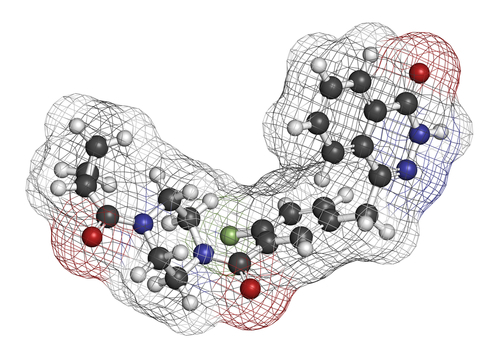Combination BET & PARP inhibitor therapy; potential therapeutic for ovarian cancer
M3 Global Newsdesk Feb 15, 2018
Poly (ADP-ribose) polymerase (PARP) inhibitors are an effective treatment for BRCA1/2-mutated advanced epithelial ovarian cancers (EOC), but they have not been evaluated against EOC tumors without the BRCA1/2 gene mutations.

Researchers at the Wistar Institute in Philadelphia, Pennsylvania, recently identified a method to sensitize BRCA-proficient tumors to PARP inhibitors so that more patients could benefit. Past research has demonstrated that bromodomain and extra-terminal (BET) inhibitors have antitumor activity with manageable toxicity. BET inhibitors are currently in clinical development for hematopoietic malignancies as well as other types of cancer.
The findings suggest that the BET inhibitor may allow cells with DNA damage that have been treated with PARP inhibitors to proceed into defective mitosis, and ultimately mitotic catastrophe and apoptosis.
According to the study published in Cell Reports, combining the two compounds resulted in a synergistic effect that ultimately led to cell death. “Our findings indicate that a combination of a BET inhibitor and a PARP inhibitor represents a potential therapeutic strategy for BRCA-proficient cancers,” wrote the authors, who were led by Sergey Karakashev, PhD, a postdoctoral researcher at the Wistar Institute.
It has been suggested that targeting the DNA repair proteins WEE1 and TOPBP1 may sensitize BRCA1/2 wild-type cancer cells to PARP inhibitors. Blocking the activity of the bromodomain-containing protein 4 (BRD4), a BET protein often amplified in high-grade serous ovarian cancer (HGSOC), allows cells with DNA damage caused by the PARP inhibitor to proceed into cell division without repairing the damage, thus resulting in cell death by mitotic catastrophe.
In this study, the investigators used the BET inhibitor JQ1 to treat OVCAR3 cells, a HGSOC cell line that carries a mutated TP53 gene with wild-type BRCA1/2. WEE1 and TOPBP1 genes were decreased by JQ1 in a dose-dependent manner; the in vitro effects were then validated in a mouse model.
Dr. Karakashev and colleagues determined that JQ1 has a synergistic effect with olaparib, an FDA-approved PARP inhibitor, using a combination index that quantifies additive effects, synergisms, and antagonisms of drug combinations. They reported that JQ1 and olaparib are synergistic in suppressing the growth of BRCA1/2 wild-type cells by inducing apoptotic cell death.
Their findings suggest that the BET inhibitor may allow cells with DNA damage that have been treated with PARP inhibitors to proceed into defective mitosis, and ultimately mitotic catastrophe and apoptosis.
To assess the effects of the combination on the growth of BRCA1/2 wild-type EOC tumors in vivo, the investigators treated xenografted EOC tumors using the BRCA1/2 wild-type OVCAR3 cells. Mice were randomized to one of four groups:
- JQ1 20 mg/kg
- Olaparib 50 mg/kg
- JQ1 plus olaparib
- Controls
There was no significant effect of either JQ1 or olaparib alone on the growth of the xenografted tumors. In contrast, a combination of JQ1 plus olaparib resulted in significant suppression of growth in the xenografted tumors. The tumor burden as measured by the weight of dissected tumors was reduced; however there was no significant difference in the body weight of mice among treatment groups, indicating that the combination treatment did not cause overt toxicity. Using immunohistochemical staining on sections of dissected tumors, the researchers correlated the tumor-suppressive effects observed in vivo with the in vitro molecular pathways.
The authors noted that one limitation to the study is that BET inhibition affects the expression of other genes in addition to WEE1 and TOPBP1, so other genes could also contribute to the synergy. “Given the potentially broad applicability of the BET inhibitor and PARP inhibitor combination in human cancers, regardless of BRCA1/2 mutational status, we anticipate our findings to have far-reaching implications for developing future combinatory cancer therapeutics,” the authors concluded.
This story is part of our Global Content Initiative, where we will feature selected stories from our Global network which we believe would be most useful and informative to our doctor members.
-
Exclusive Write-ups & Webinars by KOLs
-
Daily Quiz by specialty
-
Paid Market Research Surveys
-
Case discussions, News & Journals' summaries